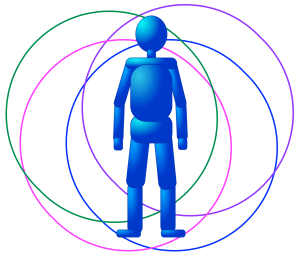 Fall arrived in Colorado today with a curious mix of summer sunshine and a chill wind from the west announcing the inevitable change of seasons. The day also marks Fall Prevention Awareness Day (and the beginning of Fall Prevention Awareness Week); not the prevention of shorter days and cooler temperatures, but a reminder that although the fall season is unavoidable, taking a fall is not.
Fall arrived in Colorado today with a curious mix of summer sunshine and a chill wind from the west announcing the inevitable change of seasons. The day also marks Fall Prevention Awareness Day (and the beginning of Fall Prevention Awareness Week); not the prevention of shorter days and cooler temperatures, but a reminder that although the fall season is unavoidable, taking a fall is not.
The National Council on Aging (NCOA) started the observance a decade ago to help people understand that falling is not a normal part of aging. The power to prevent taking a fall begins with developing our awareness. That includes recognizing health issues that may contribute to unstable balance, e.g., vision difficulties, medications that cause dizziness, joint problems, weak muscles, injury, certain illnesses such as Parkinson’s disease; and environmental conditions that literally “trip us up.” Acknowledging the risks allows us to address them, e.g., removing tripping hazards in the home, improving lighting, and installing grab bars. The NCOA’s 6 Steps to Prevent Falls provides a basic list of things to keep in mind to help minimize the risk of a fall.
Not surprisingly, the number one strategy on the NCOA’s and most every other fall prevention checklist is exercise. Physical activities that develop strength, increase agility, and challenge balance (think standing on one leg) help us maintain the ability to control our stability. This common sense advice reminds us to “use it or lose it.”
One essential component of fall prevention awareness, though, tends to go missing from most lists: awareness of balance itself. Because our sense of balance is so automatically and continuously embedded in movement control we don’t recognize that balance is a sensory/motor activity. That is, balance isn’t just about moving muscles and joints; it begins with and depends upon perception. And, as with vision and hearing, we can improve our balance perception (and thereby movement based on that perception) by paying attention to it.

Sense of Balance: A multi-sensory perception made of sensory input from: 1. the inner ear motion sensors (vestibular); 2. the muscles and joints (proprioception); 3. vision, and 4. touch. The brain weaves together the different sensory feeds to figure out where we are in space in relationship to gravity.
Gymnasts, ice skaters, skiers, snowboarders and bicyclists all tune in to their sense of balance. Why? Because the increased risk of falling necessitates heightened awareness of postural alignment and of how weight shifts in relationship to gravity during movement. Lessons from the intentional balance challenges of our younger days provide us with insights on how to handle the unintentional challenges that may arise with age.
“Sense of balance” carries on automatically in the background of attention – a simple way to enhance it is turn up the light of awareness on it. For example, notice where you feel your weight as you sit at the computer or stand in the grocery line: Is it more to one side? Do you feel your weight back on your heels? Is your head tilted to the side or dropped forward or back? How might you shift your body position to feel more centered and relaxed?
Try this awareness exercise to improve balance: Feel the alignment of your shoulders and torso over your hips and legs. Notice the feel of the weight of the whole body supported from the ground up. By simply bringing awareness to postural alignment and to the feel of weight as it shifts during movement we enhance our ability to remain stable on our feet.

2 comments